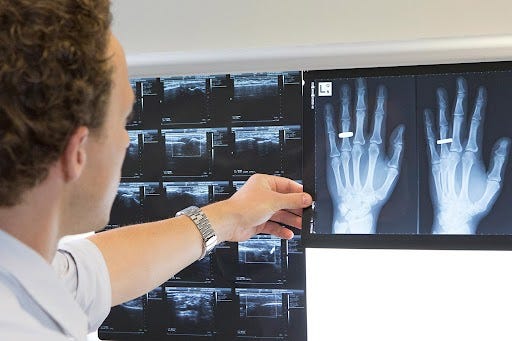
Musculoskeletal injections are a safe and modern procedure which offers pain relief in the form of a hip, knee, elbow or shoulder injection. These cortisone injections are typically considered when physiotherapy and oral medication have been tried and the pain is still not tolerable.
Overview
Musculoskeletal injections are often considered before surgery is contemplated or if surgery is not possible. These injections deliver powerful medications directly to the area that is the source of the pain and are usually much more effective than tablets.
Preparing for the procedure
Please bring your referral (letter from your practitioner) and your Medicare and/or Pension Healthcare card with you to your appointment. It is important to bring all previous imaging relating to the region of interest.
You may eat a light meal within a few hours before the procedure. If you are an insulin dependent diabetic, do not change your normal eating pattern prior to the procedure.
Confirm with your local doctor that it’s safe to continue taking your routine medications (such as high blood pressure and diabetic medications) prior to your procedure.
You will need a driver to accompany you on the day, who is responsible for getting you home safely.
Do not take pain medications or anti-inflammatory medications on the day of the procedure and please inform the radiographer if you are or you suspect you may be pregnant.
Musculoskeletal injection procedure
The procedure technique will depend on the area being injected.
Musculoskeletal injections can be performed using the CT scanner or ultrasound to guide the injection. The procedure may be performed while you are sitting or lying down and is generally very quick, taking less than five minutes for the actual injection.
You may be asked to change into a gown for the procedure.
Medications used for the procedure
With most musculoskeletal injections a mixture of medications including anaesthetic and cortisone are administered. The anaesthetic is fast-acting and will start working quickly and lasts up to eight hours. Cortisone is long lasting and may not begin working for several days following the injection, but the effects can last for months.
After the procedure
Depending on the type of injection you may not be able to drive home. It is best to check with reception when making your appointment. Patients may return to their normal activities the day after the procedure, including returning to work.
Most patients will experience pain relief immediately after the procedure because of the anaesthetic however it will usually wear off within eight hours and the pain often returns. The cortisone takes two days to begin working. Generally, it is best to ease back into exercise or more strenuous activities over two weeks as the medication begins to work. Please also consult your doctor for specific advice to address your individual needs.
Patients are asked to record the relief they experience after the procedure and keep a record of their pain on a post-injection evaluation sheet.
We suggest you return to your referring doctor two weeks following the injection.
FAQs
What is the risk of infection?
If you have a local skin or systemic infection, a musculoskeletal injection may put you at greater risk for spreading the infection. Make sure to tell your doctor if you have any infected wounds, boils, or rashes anywhere on your body.
Can I have a musculoskeletal injection if I have other medical conditions?
Injections are usually an elective procedure offered to patients without life-threatening conditions. A medically unstable patient should have his or her medical condition treated before any elective injections are given.
If you have an accompanying medical illness, you should discuss the risks of a musculoskeletal injection with your physician. For instance, patients with diabetes might experience an increase in blood sugar after an injection with cortisone. Patients with congestive heart failure, renal failure, hypertension, or a significant cardiac disease may have problems due to the effects of fluid retention several days after an injection.
How many injections will I need?
The number and frequency of injections depends on the condition and your specific circumstances, although it is generally considered reasonable to limit the number to three times per year to avoid systemic side effects. This is best discussed with your referring doctor.
What are the side effects of musculoskeletal injections?
Side effects are minimal and consist mainly of mild tenderness in the area of injection which disappears in two days. Along with analgesics and physical therapy, spinal injections have brought relief to thousands of patients. Adverse reactions and serious complications are very rare.
What are the success rates of musculoskeletal injections?
Musculoskeletal injections are generally successful in relieving pain for most patients. While the effects of the injection tend to be temporary (one month to one year), they can be beneficial in providing relief to patients during an episode of severe back pain.




More Stories
Marketing 1on1: A Trusted One-to-One Marketing Company
동탄출장마사지: 지친 일상 속 힐링의 정답
What Is Silver Bullion? How and Where to Buy Silver Bullion and Silver for Sale